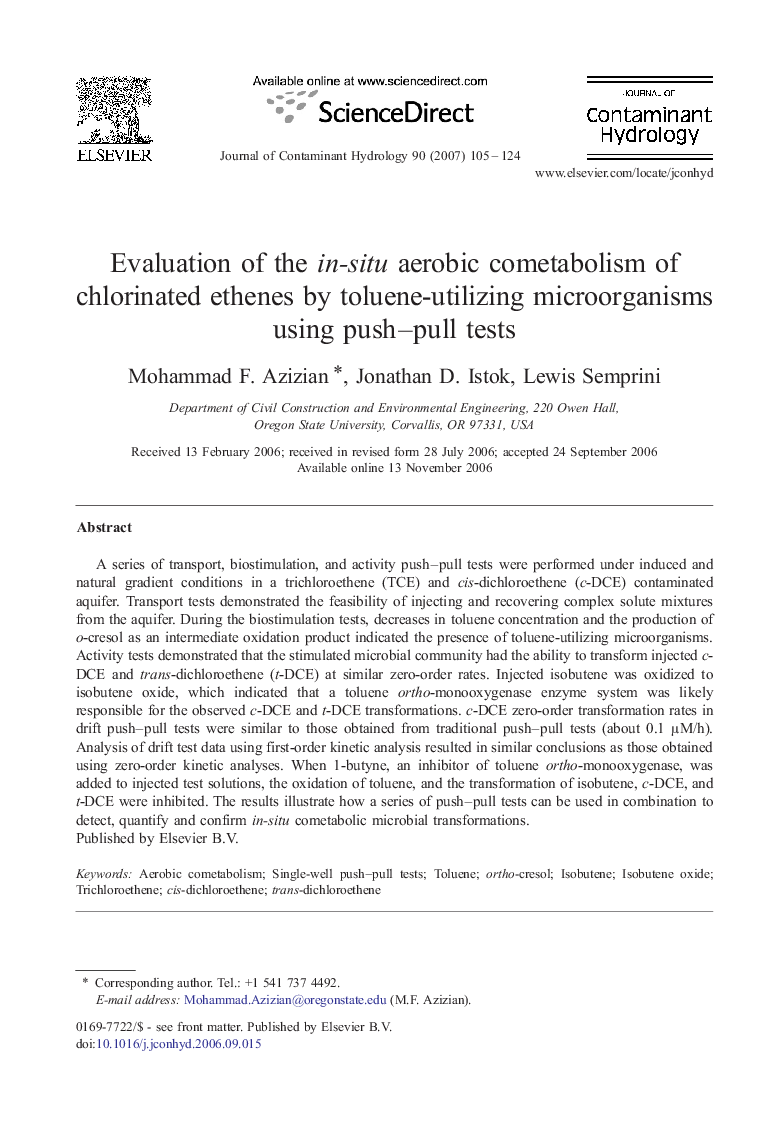| کد مقاله | کد نشریه | سال انتشار | مقاله انگلیسی | نسخه تمام متن |
|---|---|---|---|---|
| 4547612 | 1627127 | 2007 | 20 صفحه PDF | دانلود رایگان |

A series of transport, biostimulation, and activity push–pull tests were performed under induced and natural gradient conditions in a trichloroethene (TCE) and cis-dichloroethene (c-DCE) contaminated aquifer. Transport tests demonstrated the feasibility of injecting and recovering complex solute mixtures from the aquifer. During the biostimulation tests, decreases in toluene concentration and the production of o-cresol as an intermediate oxidation product indicated the presence of toluene-utilizing microorganisms. Activity tests demonstrated that the stimulated microbial community had the ability to transform injected c-DCE and trans-dichloroethene (t-DCE) at similar zero-order rates. Injected isobutene was oxidized to isobutene oxide, which indicated that a toluene ortho-monooxygenase enzyme system was likely responsible for the observed c-DCE and t-DCE transformations. c-DCE zero-order transformation rates in drift push–pull tests were similar to those obtained from traditional push–pull tests (about 0.1 μM/h). Analysis of drift test data using first-order kinetic analysis resulted in similar conclusions as those obtained using zero-order kinetic analyses. When 1-butyne, an inhibitor of toluene ortho-monooxygenase, was added to injected test solutions, the oxidation of toluene, and the transformation of isobutene, c-DCE, and t-DCE were inhibited. The results illustrate how a series of push–pull tests can be used in combination to detect, quantify and confirm in-situ cometabolic microbial transformations.
Journal: Journal of Contaminant Hydrology - Volume 90, Issues 1–2, 20 February 2007, Pages 105–124